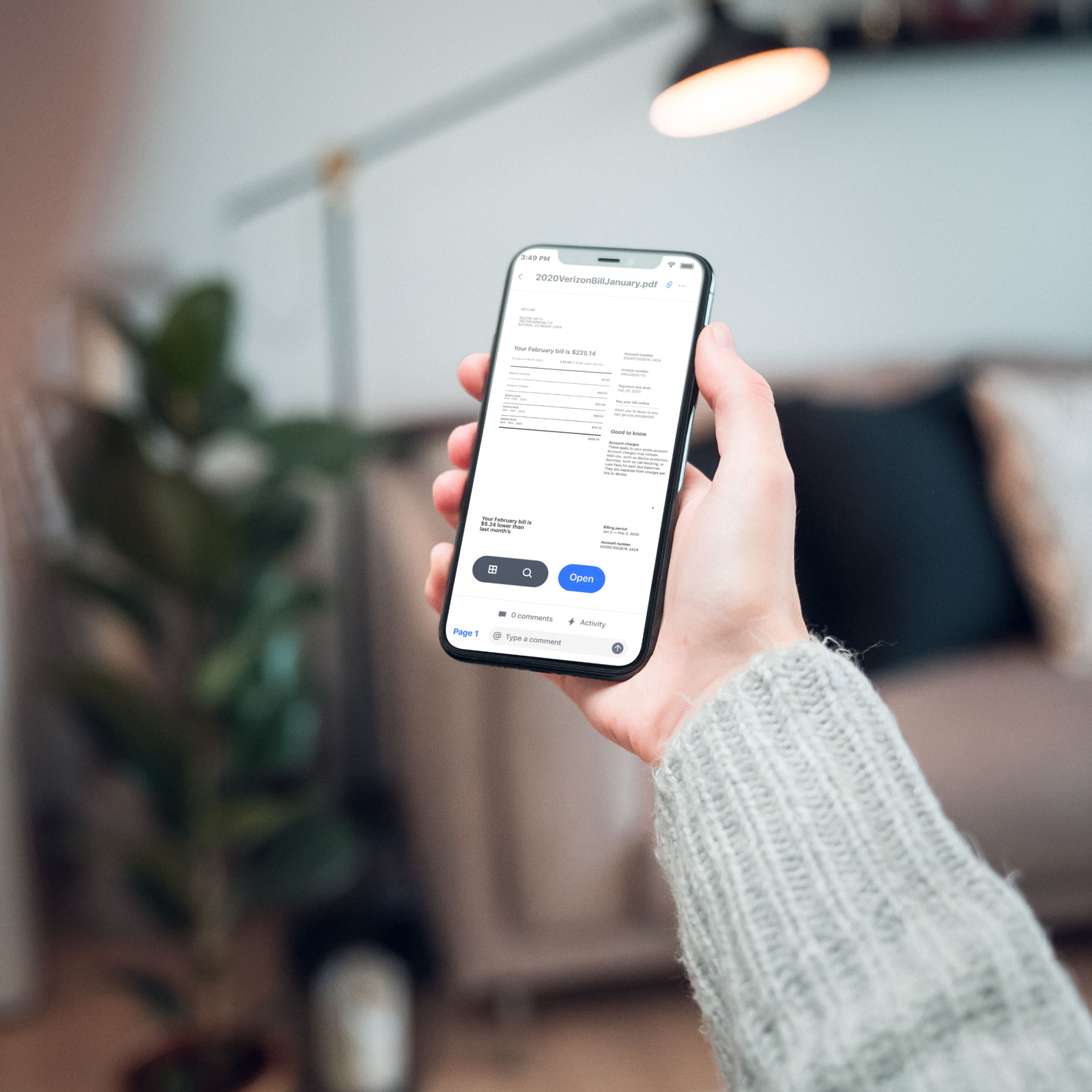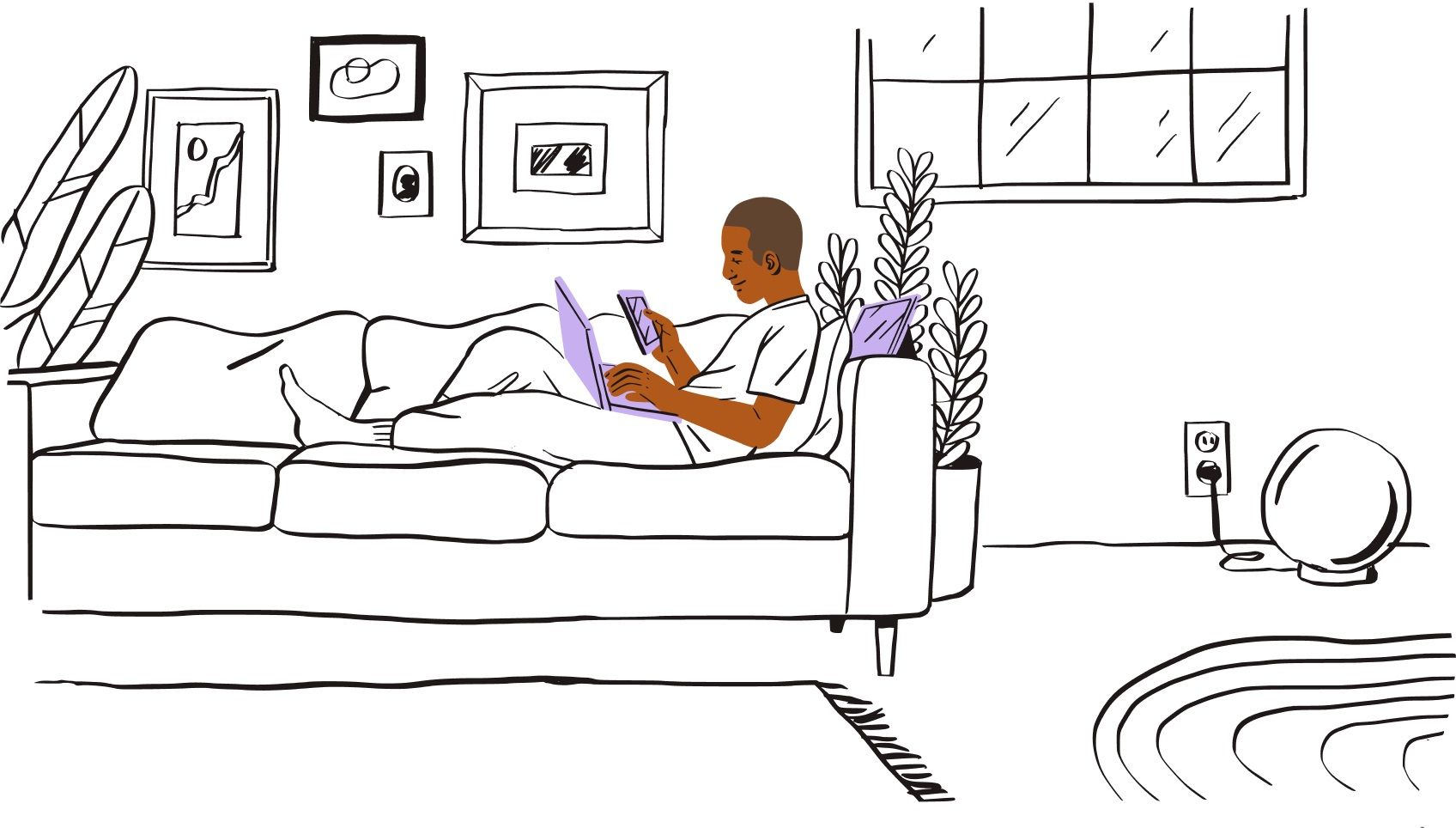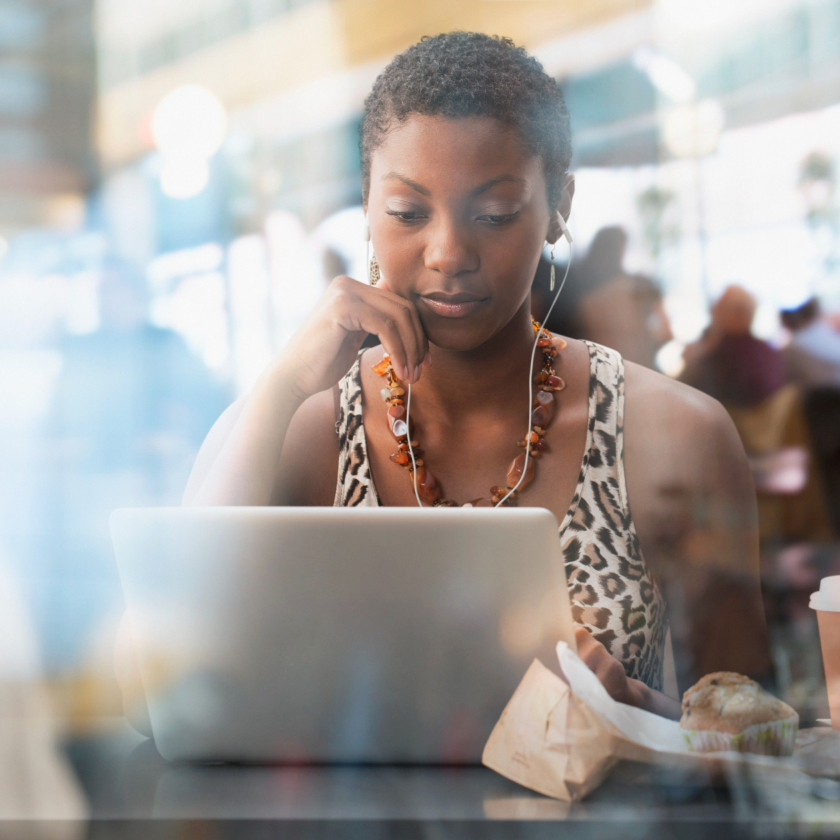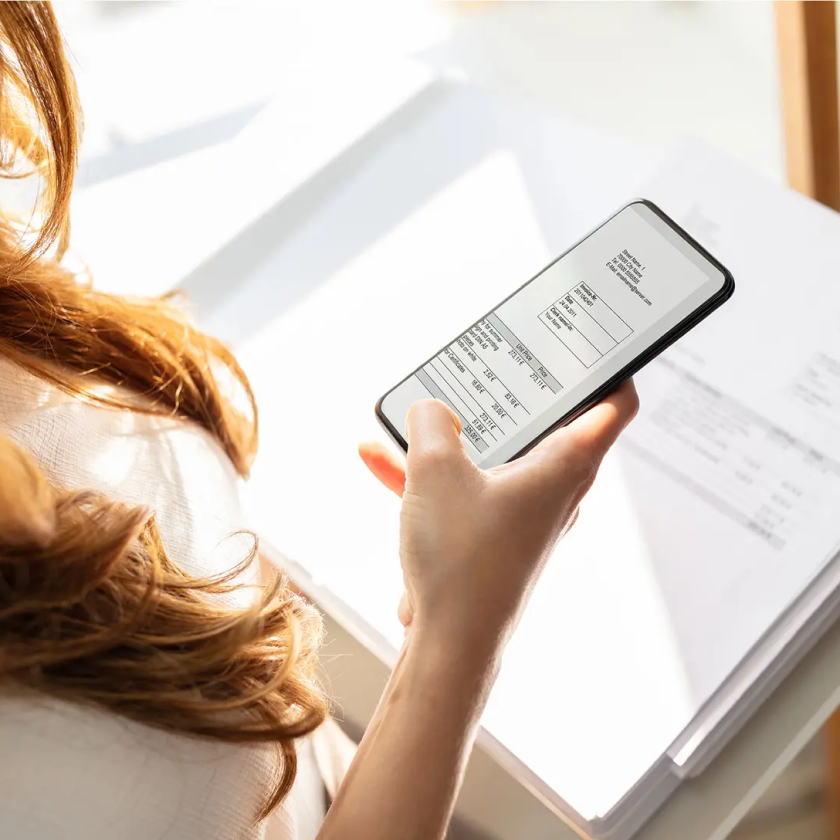휴대폰이 없는 삶은 상상하기 어렵습니다.
사진을 찍고, 저장하는 것에서부터 이동 중 이메일과 파일을 확인하는 것까지 인터넷은 거의 모든 것을 가능하게 해주었습니다. 오늘날 우리는 거의 대부분의 일을 휴대폰으로 처리하죠.
그래서 갑자기 iPhone이 작동을 멈추거나 없어지면 우리는 어쩔 줄을 모릅니다. 새로운 장치를 마련해 모든 것을 새롭게 설정하고 연락처와 파일, 데이터를 전송하는 과정도 정말 번거롭죠.
그래서 iPhone을 백업해야 합니다. iPhone을 백업해 놓으면 파일과 데이터를 보호할 수 있고 새로운 장치로 전환하는 과정도 간편하죠.
Apple과 macOS 사용자를 위한 이 안내서에서는 Mac에서 iPhone을 백업하는 다양한 방법을 살펴보겠습니다.
iPhone을 백업해야 하는 이유
iPhone 사용자라면 누구나 백업을 통해 파일을 안전하게 보호해야 합니다.
Mac에서 iPhone을 백업하고 복원하는 방법은 사실 꽤 간단합니다. 백업이 왜 필요하냐고 생각할 수도 있지만, 백업은 사고 발생에 대비한 보험과도 같습니다.
다음과 같은 경우 iPhone 데이터 사본이 필요할 수 있습니다.
- 휴대폰이 고장났거나 분실 또는 도난당한 경우
- 새로운 iPhone으로 업그레이드하여 데이터를 전송해야 하는 경우
새로운 버전의 iOS로 업그레이드한 후 데이터가 사라지는 경우도 있습니다. Mac으로 iPhone을 정기적으로 백업해두면 예상치 못한 문제가 발생해도 언제나 간편하게 데이터를 복구할 수 있습니다.
Mac에서 iPhone을 백업하는 방법
먼저 iPhone 백업을 저장할 위치부터 결정하세요. 데스크톱 Mac이나 MacBook 노트북 같은 컴퓨터에 저장할 수도 있고, 클라우드에 저장할 수도 있습니다. Mac이나 MacBook에 iPhone을 백업하는 방법은 곧 설명하겠지만, iPhone 백업의 용량은 꽤 큰 편이라 디스크 공간을 차지하지 않는 클라우드에 저장하는 것이 저장 공간 측면에서 경제적입니다.
iCloud 스토리지에 iPhone 백업하기
iPhone 콘텐츠를 Apple iCloud에 백업하려면 먼저 Mac이나 MacBook, MacBook Air 장치가 Wi-Fi 네트워크에 연결되어 있는지 확인한 다음 다음 방법을 따라 진행하세요.
- 설정 앱을 열고 이름을 탭한 후 iCloud를 선택합니다.
- iCloud 백업을 탭해 iCloud 백업을 켬으로 설정합니다. 그러면 휴대폰이 충전 중이고, 잠겨 있고, Wi-Fi에 연결되어 있을 때 iCloud가 특정한 데이터를 자동으로 백업합니다.
- 같은 백업 페이지에서 지금 백업을 탭합니다. 백업이 진행되는 동안에는 Wi-Fi가 연결된 상태로 유지되어야 합니다. 지금 백업 아래에는 마지막으로 iPhone이 백업된 날짜와 시간이 표시됩니다.
iCloud를 사용해 iPhone을 백업할 때는 파일과 설정 전체가 백업에 포함되는 것이 아닙니다.
백업에 포함되지 않는 데이터는 다음과 같습니다.
- 캘린더, 연락처, 메모, iMessage 등 iCloud에 이미 저장된 데이터
- Apple Mail 데이터
- Apple Pay 설정
- Touch ID 및 Face ID 설정
- App Store 콘텐츠
- iCloud 음악 라이브러리 콘텐츠
- iTunes나 Apple Music을 통해 구매하거나 다운로드하지 않은 모든 음악
Mac에서 iPhone 백업하기
백업을 Mac 데스크톱 컴퓨터나 MacBook 노트북에 저장하고 싶은 사람도 있습니다.
Mac에 macOS 10.15(Catalina 버전) 또는 그 이후 버전이 설치되어 있는 경우 Finder를 사용해 iPhone을 백업할 수 있습니다.
- USB 케이블을 사용해 iPhone을 Mac 또는 MacBook에 연결합니다.
- Mac 또는 MacBook의 Finder 사이드바에서 iPhone을 선택합니다.
- Finder 창 상단에서 일반을 클릭합니다.
- iPhone의 모든 데이터를 이 Mac에 백업을 누릅니다.
- 백업 데이터를 보호하고 비밀번호를 설정하고 싶은 경우 로컬 백업 암호화를 선택합니다.
- 지금 백업을 클릭합니다.
macOS 10.14(Mojave 버전) 또는 그 이전 버전의 경우 iTunes를 사용해 iPhone을 백업할 수 있습니다.
- USB 케이블을 사용해 iPhone을 Mac 또는 MacBook에 연결합니다.
- iTunes를 엽니다(아직 설치하지 않았다면 먼저 iTunes를 설치합니다).
- iTunes에서 작은 iPhone 기기 아이콘을 클릭합니다.
- 백업에서 이 컴퓨터를 선택합니다.
- 지금 백업을 클릭합니다.
- 이제 iPhone이 Mac이나 MacBook에 정보를 저장합니다.
백업 폴더에 있는 파일은 절대로 변경하지 마세요. 아래에서 백업 폴더를 Dropbox에 저장하는 방법을 설명하겠지만, 백업에 포함된 파일/폴더 이름을 변경하거나 파일을 추가/삭제해서는 안 됩니다. 그러면 휴대폰을 복원할 때 문제가 발생할 수 있습니다.
Dropbox를 사용해 iPhone 백업을 클라우드에 저장하기
iCloud를 사용하는 데는 여러 가지 제약이 있습니다. 타사 장치도 사용하는 사람들은 iCloud를 제한적으로만 사용할 수 있고, iCloud 서비스를 사용하면서 iPhone에 파일을 저장하는 경우 어떤 파일이 어디에 저장되는지 파악하기가 힘들죠.
모든 중요한 파일을 안전하고 쉽게 찾을 수 있도록 하려면 Dropbox를 모든 장치의 주요 저장 공간으로 사용하는 것이 가장 좋습니다. 그 방법은 잠시 후 설명하도록 하고, 지금은 Dropbox에 iPhone 백업을 저장하는 방법을 살펴보도록 하겠습니다.
백업 파일을 Dropbox에 업로드하려면 먼저 위에 설명된 iTunes 백업 프로세스를 따라 백업을 컴퓨터에 저장해야 합니다. 백업이 컴퓨터에 저장됐다면 다음의 단계에 따라 백업을 Dropbox에 저장할 수 있습니다.
- Finder를 열고 메뉴 표시줄 상단에서 이동을 선택합니다.
- 이동 탭의 드롭다운 메뉴를 열고 Option 키를 길게 누르면 메뉴에 라이브러리 폴더가 표시됩니다.
- 라이브러리 폴더를 열고 다음 폴더를 순서대로 클릭합니다.
- Application Support
- MobileSync
- Backup
- Backup 폴더를 연 후 수정한 날짜를 기준으로 항목을 정렬해 가장 최근의 백업이 목록 상단에 표시되게 합니다.
- 브라우저나 데스크톱 클라이언트를 통해 Dropbox 파일을 엽니다.
- 가장 최근에 만들어진 백업 폴더를 Dropbox 창으로 끌어다 놓은 후 업로드가 완료될 때까지 기다립니다.
위의 단계가 완료되면 백업 사본이 Dropbox 클라우드 스토리지에 저장됩니다. 그러면 추후 어디서나 모든 장치로 백업에 액세스해 데이터를 복원할 수 있습니다.
Dropbox를 이용해 iPhone 및 기타 모든 데이터를 백업하려면 요금제를 선택하세요.

Mac에서 iPhone 백업이 저장된 위치 찾기
백업은 Mac이나 MacBook의 중앙 폴더에 보관됩니다.
백업 목록을 찾고 싶다면 다음 방법에 따라 백업이 저장된 폴더로 이동하세요.
- 메뉴 표시줄에서 돋보기를 클릭합니다(보통은 오른쪽 상단 날짜/시간 옆에 위치해 있습니다).
- ~/Library/Application Support/MobileSync/Backup/을 입력하거나 복사해 붙여 넣습니다.
- Folders 하위 목록에서 Backup 폴더를 선택합니다.
특정 백업을 찾아야 하거나 macOS 10.15(Catalina) 또는 그 이후 버전이 설치되어 있는 경우 다음 방법에 따라 백업을 찾을 수 있습니다.
- Finder를 엽니다.
- iPhone을 찾아 클릭합니다.
- 일반 탭에서 백업 관리를 클릭하면 백업 목록이 표시됩니다.
- 찾고 있는 백업에서 마우스 오른쪽 버튼을 클릭한 후 Finder에서 보기를 선택해 백업을 확인합니다.
- 백업 파일이 더 이상 필요하지 않거나 디렉터리에서 삭제하고 싶은 경우 삭제 또는 아카이브를 선택합니다.
- 작업이 완료되면 확인을 누릅니다.
iPhone이 백업되었는지 확인하는 방법
iCloud로 iPhone을 백업했다면 다음 방법에 따라 백업을 확인할 수 있습니다.
- iPhone에서 설정 > [사용자 이름] > iCloud > 계정 저장 공간 관리 > 백업으로 이동해 iCloud 백업을 확인합니다.
- 삭제하고 싶은 백업이 있는 경우 목록에서 백업을 선택한 후 백업 삭제 및 끄기를 클릭합니다.
백업을 컴퓨터에 저장한 경우 해당 폴더로 이동하면 됩니다. 방법은 이 안내서의 이전 섹션에 설명되어 있습니다.

Mac에서 iPhone 백업을 복원하는 방법
iPhone 백업을 복원하는 방법은 다음과 같은 몇 가지 사항에 따라 달라질 수 있습니다.
- 백업을 생성한 방법
- macOS 운영 체제 버전(Mac 로컬 백업을 생성한 경우)
백업을 생성할 때 사용한 방법에 따라 해당 섹션의 설명을 따르세요.
iCloud 백업 복원하기
iCloud 백업으로 iPhone을 복원하는 방법은 다음과 같습니다.
- iPhone을 켠 후 설정 프로세스를 따라 앱 및 데이터 섹션으로 이동합니다.
- iCloud 백업에서 복원을 탭합니다.
- Apple ID를 사용해 iCloud 계정에 로그인하라는 메시지가 표시됩니다. 계정에 로그인한 후 다음의 단계를 따릅니다.
- 복원하려는 백업을 선택합니다. 보통은 가장 최근에 만들어진 백업을 사용합니다.
- 앱과 구매 항목을 복원할 때 Apple ID를 사용해 다시 로그인하라는 메시지가 표시될 수 있습니다.
- iPhone이 백업을 복원할 때까지 기다립니다.
iTunes나 Finder로 Mac 로컬 백업 복원하기
Mac 또는 MacBook에 저장된 백업으로 iPhone을 복원하려는 경우, iPhone이 컴퓨터와 연결되어 있는지 확인한 후 설치된 macOS 버전에 따라 다음 방법을 따릅니다.
macOS 10.15(Catalina 버전)가 설치되어 있는 경우 Finder를 사용해 로컬 백업을 복원할 수 있습니다.
- Finder를 엽니다.
- iPhone을 찾아 클릭합니다.
- 신뢰를 클릭합니다.
- 이 백업으로 복원을 클릭합니다.
- 복원이 완료될 때까지는 기기를 컴퓨터에 연결한 상태로 유지해야 합니다.
- 복원이 완료되면 iPhone이 자동으로 재시작되며, 기기가 재시작된 후에도 iPhone이 컴퓨터와 동기화되는 동안에는 기기를 컴퓨터에 연결된 상태로 유지해야 합니다.
macOS 10.14(Mojave) 또는 이보다 이전 버전이 설치되어 있는 경우 iTunes를 사용해 로컬 백업을 복원할 수 있습니다.
- iTunes를 열고 iPhone 아이콘을 탭해 장치 설정을 엽니다.
- 백업 복원을 선택합니다.
- 복원하려는 백업 파일을 찾아 선택합니다.
- 복원을 클릭합니다.
- 복원이 완료될 때까지는 기기를 컴퓨터에 연결한 상태로 유지해야 합니다.
- 복원이 완료되면 iPhone이 자동으로 재시작되며, 기기가 재시작된 후에도 iPhone이 컴퓨터와 동기화되는 동안에는 기기를 컴퓨터에 연결된 상태로 유지해야 합니다.

Dropbox에서 클라우드 백업 복원하기
Dropbox에서 백업 파일을 복원하려면 먼저 Mac이나 MacBook에 다운로드하세요. 해당 파일을 처음에 가져온 백업 폴더에 다시 넣어야 합니다. 하지만 이 폴더는 컴퓨터에 백업이 저장된 경우에만 존재하므로 iTunes가 올바른 폴더를 만들 수 있도록 먼저 새로운 iPhone 백업 파일을 만들어야 할 수도 있습니다.
백업 파일을 Dropbox에서 Backup 폴더로 다운로드했다면 iTunes에서 백업을 복원할 때의 단계를 따라 백업 파일을 복원할 수 있습니다.
파일을 컴퓨터에 저장하는 것에는 위험이 뒤따릅니다. 컴퓨터에 무슨 문제라도 발생하면 파일이 손실되고 이를 복구할 방법도 없죠. 클라우드 스토리지의 경우 모든 콘텐츠가 암호화된 상태로 온라인에 안전하게 보관되어 이러한 위험이 없습니다.
Dropbox에 파일을 저장하면 파일을 잃어버릴까 봐 걱정할 일도, 어떤 파일이 백업되었는지 헷갈릴 일도 없습니다. 모든 중요한 파일이 항상 있어야 할 곳에 있게 되죠.
앞서 설명한 대로 iPhone 백업은 모든 콘텐츠의 사본을 만들지는 않습니다. Dropbox에 파일을 업로드하는 경우 사용자가 파일 저장 위치를 결정하게 됩니다. 여기에는 다운로드한 음악 중 iPhone 백업에 포함되지 않은 파일도 포함됩니다.
Cloud의 활용성 극대화하기
iPhone을 백업하는 것은 언제나 좋은 생각입니다. 하지만 콘텐츠를 더 확실하게 보호하는 방법은 모든 데이터를 클라우드에 보관하는 것이죠. 그러면 iPhone에 문제가 생기거나 휴대폰을 바꾼다고 해도 모든 파일이 언제나 안전하게 보관됩니다. 콘텐츠를 복원할 필요도 없죠.
Dropbox를 사용하면 iPhone, Macbook, 데스크톱 컴퓨터 등 연결된 모든 장치에서 계정에 저장된 모든 파일에 액세스할 수 있습니다.
지금 바로 Dropbox 계정에 가입하여 백업을 시작하세요.


